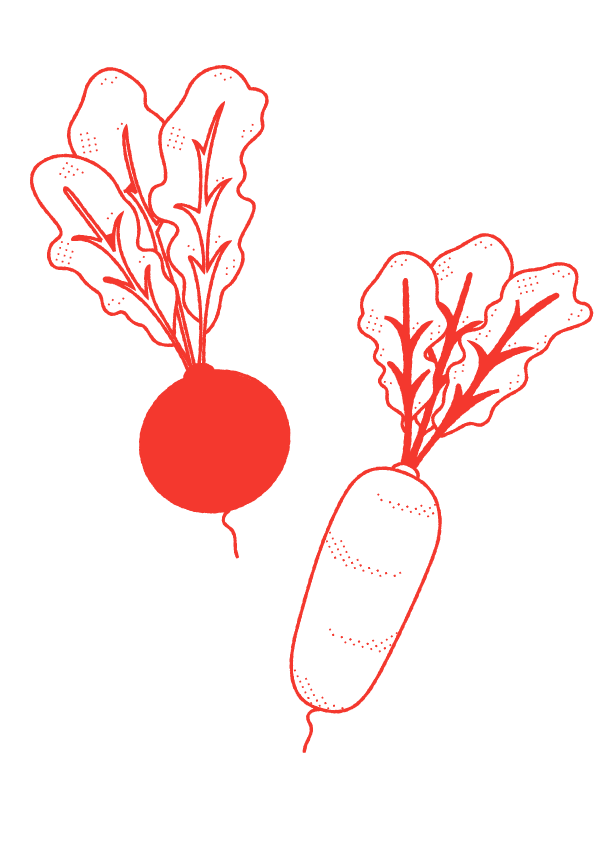Celeriac
Jamie Oliver calls celeriac “the most underrated vegetable in the whole of the United Kingdom.” Yes, its knobbly and misshapen appearance is rather uninviting. But it’s well worth seeking out this versatile and satisfying root vegetable.
Read on to learn more about celeriac, including its impact on the environment and how to buy it responsibly.
Introduction
Celeriac, also known as celery root, is a cousin of celery. It looks like a turnip the size of a grapefruit. But underneath its tough exterior, it has starchy white flesh similar to a potato. The taste is like celery stalks but with overtones sometimes described as “woodsy” or “nutty.”
Celeriac lends itself to most savory dishes you’d associate with a root vegetable: hearty mashes, comforting soups and stews, or crunchy slaws and salads. It’s even a good replacement for other starches if you’re trying to lower your carb intake. Celeriac is low in calories and carbohydrates and, when raw, is high in fiber, vitamins B6, C, and K, minerals, and antioxidants.
History
Celeriac has a long history in Europe: its ancestor, wild celery, was featured in Homer’s Odyssey as “selinon.” The wild variety had an edible root, which, according to one 16th century writer, became a delicacy in the Arab world. Its growers decided to cultivate a new variety with a larger root, and by the 1700s, celeriac was commonly grown in Europe. It’s now cultivated all over the globe, including in Northern Europe, North Africa, Siberia, and North America.
Celeriac is a quintessential part of the classic French raw vegetable salad céleri rémoulade, where it’s sliced into matchsticks and tossed with a mustardy dressing.
Season & Cultivation
Celeriac is a winter vegetable, in season from September to April.
Growing the hardy vegetable requires a lot of time, sun, and moisture. Crops typically take up to 200 days from planting to harvesting.
Celeriac seeds are first planted indoors for several weeks before being transplanted outside with a planting machine. (Maintaining an indoor growing environment and using machines to plant and harvest will of course have more of an environmental impact, but some farms are choosing more sustainable methods.)
Since celeriac needs plenty of moisture to grow, the crops are well irrigated and monitored to prevent them from drying out.
Plants are harvested when the root bulb reaches 10 to 14 cm in diameter, sometime between October and March.
After harvest, the roots will be washed and shipped to market or packed into storage for keeping. Celeriac can be kept fresh for 6 to 8 months, if stored in almost freezing temperatures with very high humidity. Of course, keeping celeriac in a storage facility run by electricity will increase the vegetable’s environmental impact. To avoid buying vegetables that have been in storage, make sure to buy them during peak season.
Starchy roots like celeriac are a low carbon choice for your dinner plate. Growing one kilogram of celeriac produces around 0.18 – 0.4 kg of GHG (Lee B, et al & Clune S, et al). This makes celeriac one of the lowest impact vegetables to eat.
Keep in mind that the farther your celeriac travels from the farm to your supermarket, the bigger its carbon footprint. It’s always best to eat locally-grown vegetables—in season—to reduce your food emissions.
Buying Advice
When buying celeriac, look for roots that feel heavy and aren’t cracked or discoloured. The green stalks should still be crisp. If the centre of the root feels or sounds hollow, it’s no longer fresh.
Store the vegetable in an unsealed bag in the salad drawer of your refrigerator. (I recommend a zero waste option like a reusable fabric or beeswax cloth bag.) It’ll keep for 2 to 3 weeks if not allowed to dry out.
Cooking Advice
When you’re ready to use your celeriac, here’s how to prepare it:
After washing thoroughly, use a sharp knife to lop off the top and bottom of the bulb. (The stalks can be saved and used as a garnish if you wish.) Now you can steady the root on a cutting board and cut off the skin. Be generous when removing its tough exterior; most sources say you’ll cut off about a quarter of the vegetable in the process.
What’s left after cutting is a block of starchy white root. This you can chop into cubes for boiling or peel into ribbons for a slaw or salad. Squeeze a lemon or drop some white wine vinegar into water to plop the pieces into; celeriac quickly begins to discolour once cut.
Roughly-chopped celeriac becomes tender after 20 minutes of boiling or 40 minutes of roasting.
This all-purpose ingredient shines raw or cooked: toss it raw into a crunchy salad, roast it with oil and herbs, mash it for a hearty oven-baked dish, or blend it into a soup. It can even stand in for potatoes in many of your favourite winter dishes or substitute for a satisfying, low-carb pasta.



